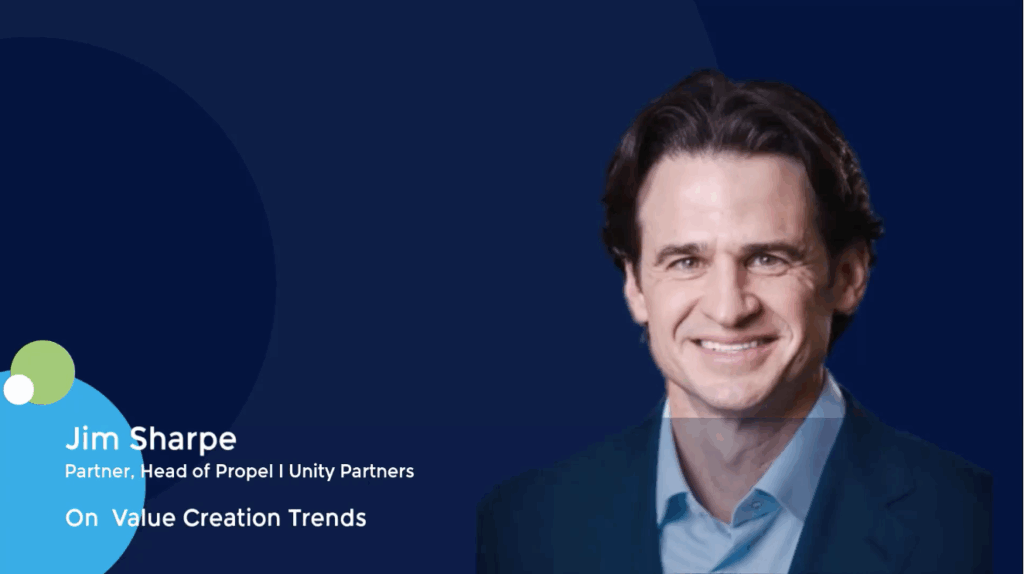Asia private equity: Mid-market GPs go multi-strategy
Mid-cap managers in Asia are mimicking their global peers by adding credit, infrastructure, and venture verticals intended to complement existing private equity strategies. It’s not necessarily an easy sell
Less than 10 years ago, CBC Group was deploying a USD 200m fund focused on growth-stage biotech deals in China. Still a healthcare specialist, it now pursues a pan-Asian mandate and has USD 7bn in assets under management across four strategies: buyout, venture, credit, and real assets. Credit and real assets were both introduced in the past three years.
“I am trying to provide investors with the opportunity to participate in sector growth without taking on excessive risk. Most of my peers are in venture, betting on pre-revenue businesses and relying on IPO exits. We are different, and that is why we prosper and grow,” said Wei Fu, CEO of CBC.
Fu doesn’t have a background in healthcare, but his resume reads like a journey through the asset classes: private equity with Temasek Holdings, infrastructure with Macquarie and Standard Chartered, and structured finance with Far East Horizon. Healthcare is a sector supported by strong macro tailwinds, and he believes this experience offers insights into how to securitise those cash flows in different ways.
CBC’s rapid rise is greeted with scepticism in some quarters of the industry. The firm’s approach is variously described as “an AUM amalgamation exercise rather than a thought-through strategy” and a narrative that “uses other people’s track records – saying, ‘look how much they are making, we can do the same’ – in the absence of an established track record of its own in any segment.”
Yet on three points, there is widespread agreement. Fu is ambitious, a gifted marketer, and willing to put money behind a new endeavour, even if it means paying up for talent. This is largely consistent with his own statements. Rolling out a strategy, according to Fu, involves lining up a few senior managing directors, committing to pay them two years’ salary, and moving quickly to establish momentum.
“The key principle is your capabilities must be ahead of your AUM. No one complains about Blackstone managing USD 1trn because they have capabilities and teams. Building an investment platform is like building a biotech company – you get the best people, align the strategy, raise capital, and go,” he said.
“We re-invest our management fees in R&D, and for a GP that means investing in talent. Success is not guaranteed, it could become a sunk cost. But if you don’t invest in R&D for new products, you will die.”
CBC’s expansion is unusual in Asian private equity for its speed and scope. Yet a growing number of mid-market managers in the region are adding strategies or verticals – driven by a need to retain and develop talent, to leverage brands and infrastructure in other areas as flagship fund sizes top out, or to capture investment opportunities that do not fit within traditional private equity strategies.
India-based True North is the newest member of the multi-strategy club, announcing its foray into private credit just this week. It is one of a dozen GPs tracked by AVCJ in the sub-USD 2bn private equity fund space – from Advantage Partners in Japan to VIG Partners in Korea to Quadrant Private Equity in Australia – that have added 23 strategies in the past 15 years. Over half have been initiated since 2021.
LPs are often wary of such expansions, thinking they could drain the limited resources of a mid-market GP, but they try to keep an open mind. “Your gut reaction is always that it’s a distraction. However, then you ask, ‘Could this distraction be additive? Could it get them deals they wouldn’t otherwise get?’” said Eric Marchand, co-founder of Southeast Asia-focused fund-of-funds Collyer Capital.
The long game
Most limited partnership agreements allow managers to raise funds under separate strategies, provided such efforts are not detrimental to existing operations. This means establishing standalone teams and laying down clear guidelines in terms of the use of shared resources and how partners divide up their time.
Asked how they address LP concerns about unnecessary distractions, private equity firms tend to emphasise not only the systems, structures, and personnel they are putting in place but also the synergies that could come with expansion. While Doug Coulter, a partner at LGT Capital Partners, accepts the logic that a multi-asset platform could be a more resilient platform, he doesn’t see it as an easy sell.
“I wouldn’t say this kind of expansion is bad, but the bar is high – you must be successful in your core strategy to get traction,” Coulter observed. “And there are plenty of examples of it not working.”
Some expansions are years in the making. The seeds of Advantage’s Asia ex-Japan strategy were sown in 2006 when the firm realised it must develop cross-border value creation capabilities to remain competitive with global players. Supporting Japanese portfolio companies overseas was the primary objective, but then the firm backed a few Asian businesses that wanted to leverage its Japan expertise.
Advantage established a team in Hong Kong from around 2011. However, plans for an ex-Asia Japan fund were delayed by efforts to stabilise the franchise within Japan. It was finally launched in 2016.
The firm began contemplating a public equities strategy around the time of the first Asia ex-Japan deals. One partner transferred from the buyout team, but public equities was otherwise staffed by new hires. A debut fund was raised in 2008, and following the period spent fixing the Japan buyout strategy, successor vintages were launched in 2018 and 2019.
The most recent fund closed on JPY 65.1bn (USD 439m), while Advantage raised JPY 130bn for its eighth Japan buyout vehicle earlier this year. Richard Folsom, the firm’s representative partner, believes there is scope to put more capital to work in public equities than private equity because the targets – companies that are open to working with Advantage but don’t want to be privatised – could be of any size.
“The way we structure investments, the way we work with companies is virtually identical to what we do in the buyout space. There was also less pushback from LPs because many had experienced the value trap in Japan’s public markets where you take positions in undervalued companies and after five years nothing has changed. They recognised the need for an external catalyst,” said Folsom.
Southeast Asia-focused Northstar Group also took its time extending from private equity into venture. The firm incubated NSI Ventures in 2014 to participate in Series A and B rounds and subsequently earmarked 10% of its PE fund for Series C and D investments. Ride-hailing business-turned-super app GoTo is the standout example of a company backed by the venture and growth strategies.
After the NSI team went independent, Northstar brought early-stage investment into the private equity fund alongside growth-stage coverage. Approximately 15% of Fund V, which closed on USD 590m in 2021, has gone into Series A and B rounds. This provided the impetus for Northstar to launch a debut venture capital fund last year, targeting USD 150m. A final close is expected next month.
“It was a natural progression, but it was only after nine years that we had the confidence and the track record to launch a fund,” said Chee-Yan Wong, CIO of Northstar. “We tested it out with that 15% allocation, and we moved in a steady and disciplined manner. If you suddenly said you wanted to raise a VC firm, I’m not sure anyone would back you. And if they did, I’m not sure you’d generate good returns.”
Build, not buy
For Australia-based Pacific Equity Partners (PEP), the decision to establish a secure assets strategy in 2018 was driven by dialogue with LPs, according to Tim Sims, one of the firm’s founders. They expressed an appetite for a product that could deliver a low-risk base return of 8%-10%, potentially rising to mid to high teens with the application of value add.
“Since trusted investment partners were interested, the remaining questions for us were: did we have high-quality access to these types of deals; could we deliver the upside through an established approach to adding value; and would engagement in this area in any way detract from existing investment activities?” Sims explained.
This resulted in a strategy – largely focused on energy transition – that generates infrastructure-like annuity income yet offer opportunities for PE-style operational improvement. PEP has raised two funds to date. More recently, the firm has added Capital Solutions, a private credit business, and PEP Gateway, a fund-of-funds offering aimed at high-net-worth investors.
Much like Northstar, Sims describes the process as organic. There was one key external hire for secure assets, but the rest of the senior team was drawn from the private equity side with a view to providing growth and leadership opportunities to PEP’s younger generation.
“It is unlikely we would just bolt something onto our system because it’s just another thing we can do. We don’t look at the world in that way. Adjacent expansion is about meeting investor needs and providing logical growth opportunities for our team,” he added.
Navis Capital Partners considered expansion through the acquisition of a readymade team but ended up recruiting a senior investment professional to lead its private credit vertical in 2022 and building around him. A debut fund is currently in the market with a target of USD 350m. Cultural fit was top of mind when making that decision, according to Nick Bloy, a managing partner at the Southeast Asia-based firm.
The primary motivation for Navis was a recognition that professional services firms need to grow if they are to retain talent. Raising ever-larger buyout funds would drag Navis out of its mid-market sweet spot, so adding a strategy emerged as the logical course of action.
These deliberations took place over the course of a decade, with the likes of venture capital and infrastructure explored and ultimately discarded. For example, Navis looked at CapAsia, which went on to be acquired by The Rohatyn Group in 2012, only to conclude that infrastructure in Southeast Asia was unlikely to deliver the desired returns. Eventually, credit emerged as a suitably synergistic choice.
“It is the asset class that has the least overlap with what we do today and is the most complementary. We’ve looked at about 2,000 different companies and maintained contact with them. Our private equity proposition – give up control of your business, stay invested in a minority capacity in partnership with Navis, we grow it and then sell to a trade buyer – is a once-in-a-lifetime decision,” said Bloy.
“But the same entrepreneur, because he’s got a growing company in an emerging economy, will talk to us about growth capital every day. If it’s non-dilutive growth capital, even better. And when that once-in-a-lifetime moment comes, he will come to us first and we will already understand the business.”
Private credit has become the most popular strategic addition in recent years for this reason. Private equity managers also pursue differentiation by introducing skillsets from their own asset class, from sector analysis to cost controls to value creation. Integration is a watchword, regardless of the strategy being added, and it filters through an organisation.
“There is sharing of economics to ensure integration – senior PE team members have some economics in the VC fund,” said Wong of Northstar. “There is also integration at the investment committee level. Three of our four partners sit on the VC investment committee and one member of the VC team is on the PE investment committee. Every Tuesday, we also do a digital call so that both teams can share ideas.”
Master the detail
Overlap at the investment committee level is not unusual, especially among founders who have ultimate control over the direction of the firm. Not all managers approach it in the same way, though.
Navis has a PE professional in each office to spend one day a week on private credit, and Bloy expects to play an active role on the credit investment committee. When VIG added a credit strategy in 2021, the Korean GP emphasised operational separation. No PE professionals spend any time on credit and the four partners who sit on the credit investment committee have a deliberately restricted mandate.
“Our participation is limited to assessing whether an investment could create a conflict of interest with the main fund or lead to reputational damage for our LPs,” said Jason Shin, a managing partner at VIG.
The devil is in the detail and LPs must pick through it, identifying potential obstacles. There is a general awareness that integration efforts can easily go awry if not properly marshalled, leading to governance issues and situations where value is destroyed rather than created. In addition, LPs are mindful that managers might only tell them what they want to hear.
“Everyone downplays the time it takes and the execution headaches it creates,” said Coulter of LGT. “The founders of the private equity business say they will only spend 5% of their time on the new strategy, but it turns out to be far more than that. At the same time, you don’t know what they are telling LPs backing the new strategy.”
The other key challenge is upfront investment. Typically, the team for a new strategy must be largely in place before a debut fund is launched, so expansion is limited to managers with sufficient balance sheet capital to pay salaries and set up ancillary infrastructure. LPs also like to see a relatively large GP commitment to the fund, ensuring the manager is fully behind the initiative.
It is possible to accelerate the journey towards economic sustainability by signing up anchor LPs on preferential terms. PEP made judicial use of zero-fee co-investment alongside the first secure assets fund while VIG’s credit team raced to USD 300m in committed capital by creating a fund-of-one structure with a customised mandate. But for the most part, GPs must accept several years of negative economics.
“From the moment you start burning money, it might take five years to break even,” said Bloy of Navis. “The first fund isn’t large. It’s not about the size, it’s about proving you’ve got a great team, an edge, and can deliver better risk-adjusted returns than anyone else. Once you’ve done that, you can scale quickly.”
If a strategy faces early headwinds and internal support wavers, things can fall apart quickly. One investment professional who worked on a new strategy for a mid-market manager described a switch in mindset from aggressive expansion to self-preservation when fundraising became more challenging. This translated into pressure on the annual budget and ultimately the team disbanded.
The situation underlines the importance of strategy selection and the timing of launch. Secondaries investor TR Capital, for example, was looking to raise a fund focused on NAV (net asset value) lending in Asia, but recently abandoned the plan after concluding that Asia wasn’t mature enough for the strategy. CEO Paul Robine is adamant that “the time will come” for NAV lending, and he is happy to wait for it.
Advantage studied the private credit opportunity in Japan for years, eventually concluding that with domestic banks willing to lend at such attractive rates, there was no way in. The firm turned its attention to sustainability instead, forming a special purpose acquisition company (SPAC) that has been active in the space and teaming up with a string of Japanese corporates to launch a hydrogen energy fund.
With capital on the balance sheet after selling a GP stake to a third-party investor in 2019, the firm is keen to explore other options, including a broader sustainability fund. At the same time, Advantage is reading playbooks authored by peers in other geographies, notably how mid-cap GPs in North America are investing in the balance sheets of mid-market insurers to create sources of permanent capital.
These entrepreneurial instincts, written into the DNA of many private equity firms, will not be muted. In addition, the difficult fundraising environment means that investment professionals are more inclined to pursue new initiatives within the comfort of their current surroundings – leveraging existing infrastructure, brand awareness, and established LP relationships – rather than spin out.
“When the market is good, junior partners are more confident in leaving a platform and trying their luck,” said Edmond Ng, a managing partner at Axiom Asia. “When fundraising is difficult, if they want to launch a new product, they will feel safer doing it under an established name.”












